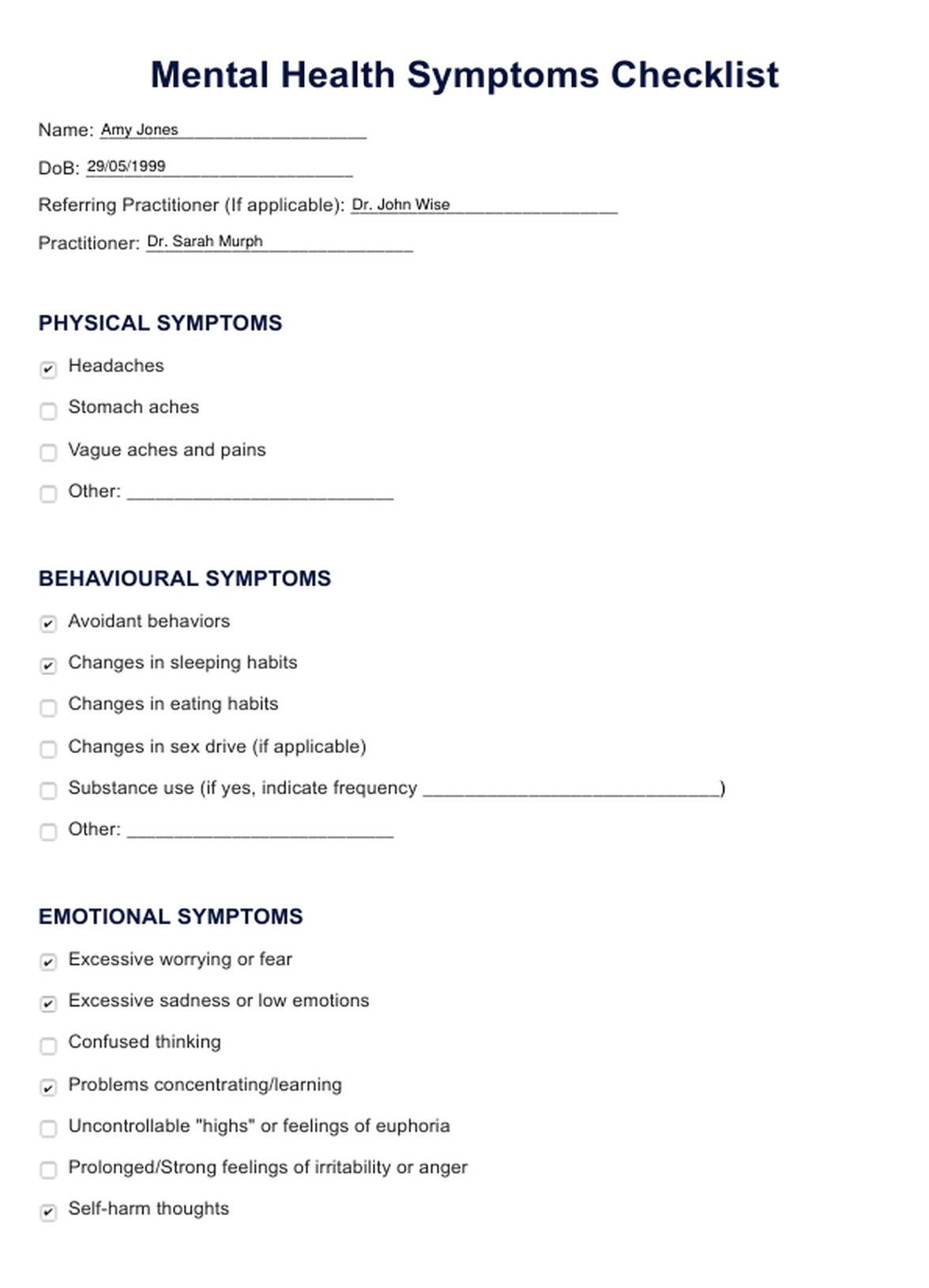Carepatron has already created a general Mental Health Symptoms Checklist that you can access for free using our platform.

Explore our Mental Health Symptoms Checklist guide with examples. Download the free PDF to assess and manage mental health effectively.
Carepatron has already created a general Mental Health Symptoms Checklist that you can access for free using our platform.
Mental Health Checklists can be used in a variety of settings. Therapists, counselors, and mental health professionals may use this checklist during sessions. However, general practitioners, often the first point of contact for mental health concerns, may also decide to use the checklist.
Healthcare professionals use Mental Health Symptoms Checklists to determine if mental health symptoms are present in the individual. They are used collaboratively with the client to decide on persistent symptoms.
EHR and practice management software
*No credit card required
Free
$0/usd
Unlimited clients
Telehealth
1GB of storage
Client portal text
Automated billing and online payments